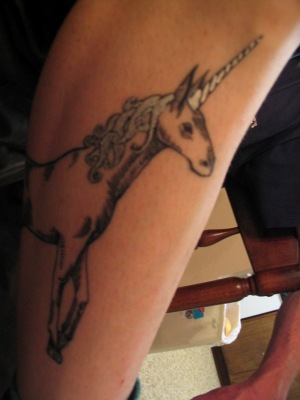Quantum Physics

Just a quick note on Quantum Physics: Illusion or Reality by Alastair Rae, 1986 (first edition, not pictured). Jonathan gave this to because it helped him understand some aspects of quantum entanglement. I wasn't quite so lucky however, and still fail to be convinced of "spooky action at a distance". Yes, yes, i hear it's been actually observed. I guess what i don't understand is the explanation. I begin to suspect it's one of these genuinely complex and technical topics which simply can't be boiled down to layperson's language and still carry the weight of the argument.
.. which segues nicely into A Life of Erwin Schrödinger by Waler Moore, 2003 !
 I think due to the previous book i got to wondering about the history of the Schrödinger's Cat puzzle, and ordered the biography. And now from email:
I think due to the previous book i got to wondering about the history of the Schrödinger's Cat puzzle, and ordered the biography. And now from email:
so for once i sort of followed thru on a thing
and have what i think is the answer here,
and it's Einstein.
according to "A Life of Erwin Schrödinger" by Walter Moore,
in 1935 Schrödinger was a professor at Oxford
and was further developing/exploring his somewhat
wildly successful Wave Equation, which as i understand it
was very good at describing particles as superpositions of waves. (!)
this description was (i think) integrated over time;
that is, it described not only the particle's present,
but it's past & future as well.
- i'm sure i'm mangling this.
Einstein was a fan of the Schrödinger Equation,
but felt that it was an incomplete model of actual reality.
In a letter to Schrödinger, Al wrote something along the lines of
Consider the situation of a pile of gunpowder which *may*
explode in the course of a year: the equation would describe
a superposition of both exploded and unexploded gunpowder, and
"There is no interpretation by which such an [equation] can be
considered an adequate description of reality."
- clearly the genesis of the Cat,
and indeed Schrödinger soon published a paper which included:
"One can even construct quite burlesque cases. A cat is shut up
in a steel chamber, together with the following diaboloical
apparatus, etc ... This inhibits us from accepting in
a naive way a 'blurred model' as an image of reality ...
There is a difference between a shaky or not sharply focused
photograph and a photograph of clouds and fogbanks."
.. which actually leaves me more confused than before
about whether Schrödinger actually wanted to assert that
the cat is both alive and dead.
It certainly sounds like he *didn't*.
Like most biographies i've read, A Life Of Erwin Schrödinger is good but not particularly valuable for its own sake, unless you happen to be yenning (?) for information about you-know-whom.
Basically Erwin's arc can be summarized:
Academically brilliant yet frustrated by underachievement until he's about 42, circa 1926, and formulates the Theory of Wave Mechanics, which see above. Thereafter quantum physics fell into two camps: the Copenhageners, led by Niels Bohr and Werner Heisenberg which insisted on all this spooky action at a distance and the determining power of the observer etc, and the non-Copenhageners, led by Albert Einstein and Erwin. Frankly, the substance of their disagreement entirely eludes me, but i'm sure it was there.
Other interesting things about Erwin: he kept two wives, even when living in America or Britain, and had frequent additional mistresses. He was an avid bicyclist, commuting by bicycle even in torrential rain.

0 Comments:
Post a Comment
<< Home